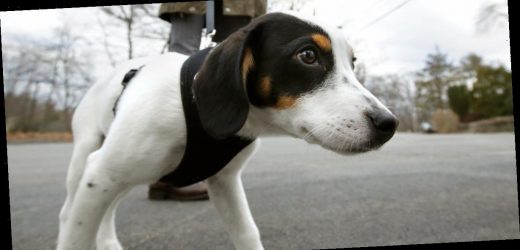- Dogs can detect epileptic seizures up to 45 minutes before they occur.
- In a study in Scientific Reports, researchers revealed that dogs can detect seizures through smell.
- In some cases, the pooches were 100% accurate in picking up the odor of a seizure.
- That’s thanks to the incredible canine nose, which can sniff out odor molecules in the parts per trillion.
- Visit the Business section of Insider for more stories.
Following is a transcript of the video.
Narrator: There are good boys, and then there are very good boys like these dogs here. They’re searching for a scent that no human can detect: the scent of an epileptic seizure. We’ve long known that dogs can detect seizures in humans in some cases 45 minutes before they occur. That’s one reason why organizations like Handi’chiens in France provide service dogs for people with epilepsy. And in some cases, this can prove lifesaving.
It might give people time to take medication that could prevent or reduce the severity of a seizure or move somewhere safer where an injury is less likely to occur. Incredible? Yes. But proven? Not until French researchers teamed up with Medical Mutts, a US-based organization that trains seizure alert dogs.
That marker, they believed, was a scent that dogs can detect. So in 2018, they set up an experiment. First, they collected dozen of samples of breath and sweat from people with different forms of epilepsy. Some of them were taken during or right after a seizure, while others were collected after exercise or at rest.
Then they distributed them among seven different steel containers in this room. Finally, they let out, or, they let in the dogs. One by one, Casey, Dodger, Lana, Zoey, and Roo walked into the room. They were trained to stop and stand still if they think they detected the scent of a seizure. And if they were right, they got a treat, good dog! To the researchers’ excitement, the canines excelled.
Three of the dogs, Casey, Dodger, and Zoey, sniffed out the odor associated with seizure with 100% accuracy. The two other pups, Lana and Roo, who had less time to train, weren’t quite as accurate. But they still correctly identified two-thirds of the seizure samples on their first try.
What makes these results even more remarkable is that the scent samples were from different people and also produced by different kinds of seizures. And what exactly is that marker made of? Here’s the thing: We still don’t know. It’s likely that seizures trigger a change in the body’s electrical activity, the researchers say. And those changes can affect the composition of odor molecules that we emit through our sweat, breath, and, likely, urine.
Now, whether people emit these odors before a seizure in time to reduce its worst effects is still in question, and it’s not something that the researchers tested. But some experts claim that people emit a specific group of odor chemicals 15 to 45 minutes prior to seizing, which dogs can detect. So what exactly makes canines such smell superstars? It’s their incredible noses.
With as many as 300 million olfactory receptors, a dog’s nose is up to 100 thousand times stronger than our own. That means they can detect a few scent molecules among trillions of them. Scientists are now trying to build electronic noses that are just as powerful. The idea is that they too could be used to sniff out diseases. But for now e-noses are nowhere near as good as dogs, and in some ways, doesn’t that seem like a good thing?
EDITOR’S NOTE: This video was originally published in April 2019.
Source: Read Full Article

